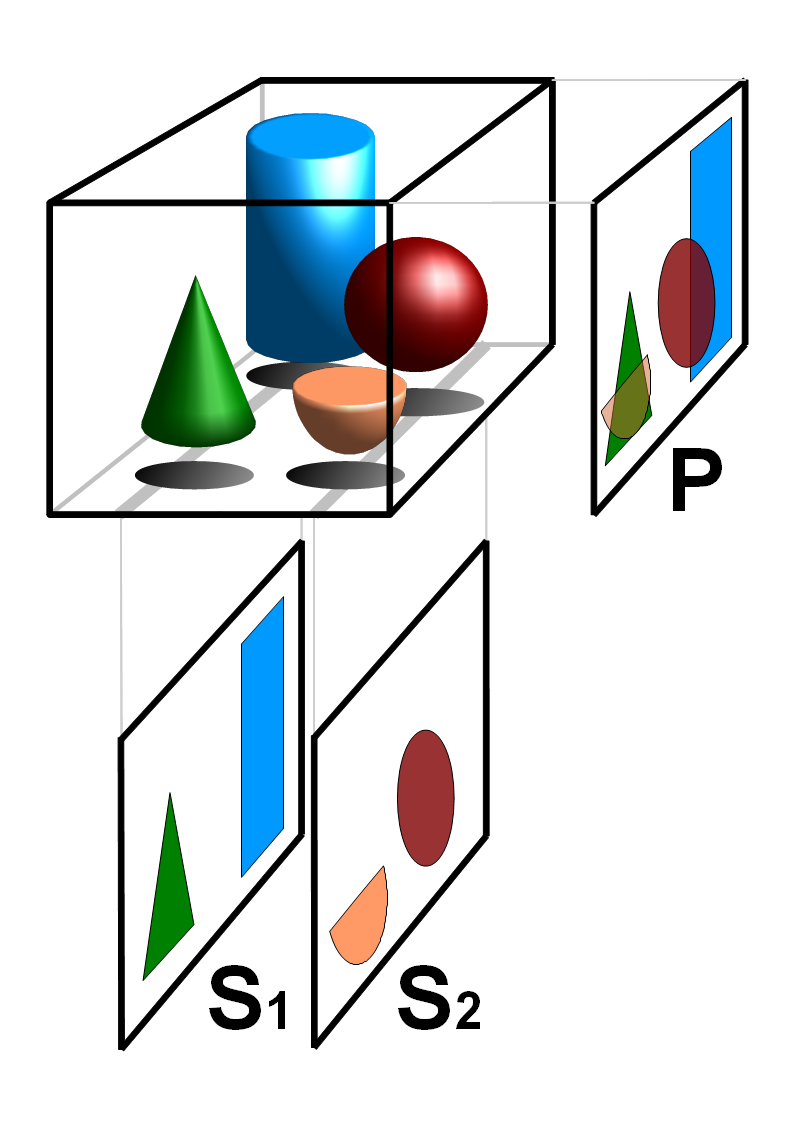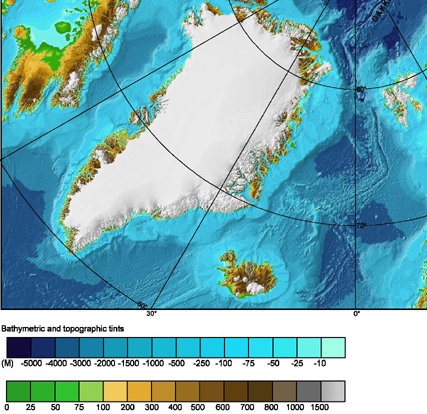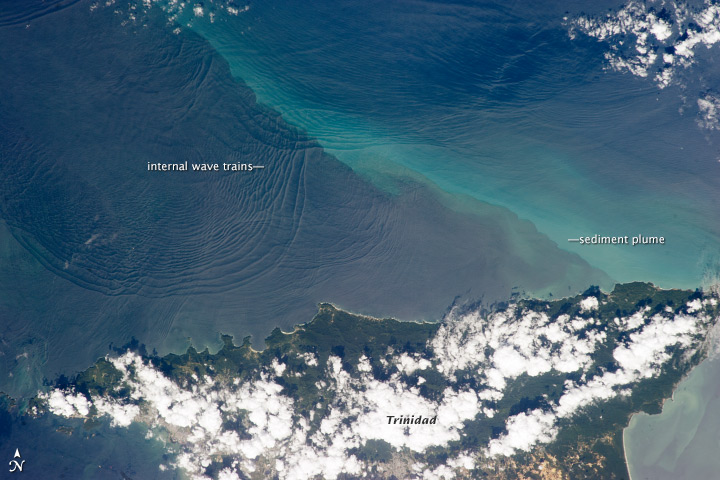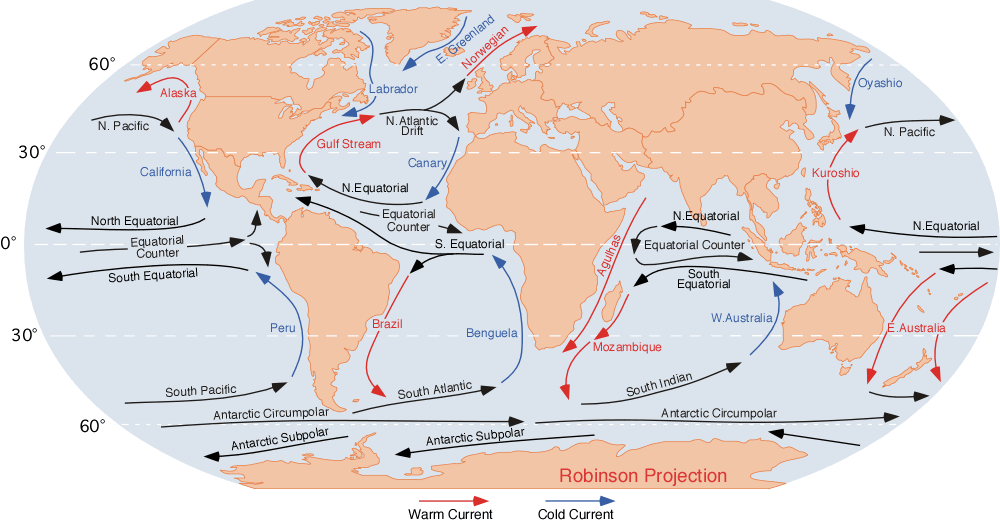|
Ocean Acoustic Tomography
Ocean acoustic tomography is a technique used to measure temperatures and currents over large regions of the ocean. On ocean basin scales, this technique is also known as acoustic thermometry. The technique relies on precisely measuring the time it takes sound signals to travel between two instruments, one an acoustic source and one a receiver, separated by ranges of . If the locations of the instruments are known precisely, the measurement of time-of-flight can be used to infer the speed of sound, averaged over the acoustic path. Changes in the speed of sound are primarily caused by changes in the temperature of the ocean, hence the measurement of the travel times is equivalent to a measurement of temperature. A change in temperature corresponds to about change in sound speed. An oceanographic experiment employing tomography typically uses several source-receiver pairs in a moored array that measures an area of ocean. Motivation Seawater is an electrical conductor, ... [...More Info...] [...Related Items...] OR: [Wikipedia] [Google] [Baidu] |
Tomography Atlantic
Tomography is imaging by sections or sectioning that uses any kind of penetrating wave. The method is used in radiology, archaeology, biology, atmospheric science, geophysics, oceanography, plasma physics, materials science, cosmochemistry Cosmochemistry () or chemical cosmology is the study of the chemical composition of matter in the universe and the processes that led to those compositions. This is done primarily through the study of the chemical composition of meteorites and ot ..., astrophysics, quantum information, and other areas of science. The word ''tomography'' is derived from Ancient Greek τόμος ''tomos'', "slice, section" and γράφω ''graphō'', "to write" or, in this context as well, "to describe." A device used in tomography is called a tomograph, while the image produced is a tomogram. In many cases, the production of these images is based on the mathematical procedure tomographic reconstruction, such as X-ray computed tomography technically being prod ... [...More Info...] [...Related Items...] OR: [Wikipedia] [Google] [Baidu] |
Rays Test
Ray or RAY may refer to: Fish * Ray (fish), any cartilaginous fish of the superorder Batoidea * Ray (fish fin anatomy), the bony or horny spine on ray-finned fish Science and mathematics * Half-line (geometry) or ray, half of a line split at an initial point * Directed half-line or ray, half of a directed or oriented line split at an initial point * Ray (graph theory), an infinite sequence of vertices such that each vertex appears at most once in the sequence and each two consecutive vertices in the sequence are the two endpoints of an edge in the graph * Ray (optics), an idealized narrow beam of light * Ray (quantum theory), an equivalence class of state-vectors representing the same state Arts and entertainment Music * The Rays, an American musical group active in the 1950s * Ray (musician), stage name of Japanese singer Reika Nakayama (born 1990) * Ray (girl group), a Japanese girl group formed in 2019 * Ray J, stage name of singer William Ray Norwood, Jr. (born 1981) * '' ... [...More Info...] [...Related Items...] OR: [Wikipedia] [Google] [Baidu] |
Oceanic Gyre
In oceanography, a gyre () is any large system of ocean surface currents moving in a circular fashion driven by wind movements. Gyres are caused by the Coriolis effect; planetary vorticity, horizontal friction and vertical friction determine the circulatory patterns from the ''wind stress curl'' (torque). ''Gyre'' can refer to any type of vortex in an atmosphere or a sea, even one that is human-created, but it is most commonly used in terrestrial oceanography to refer to the major ocean systems. Gyre formation The largest ocean gyres are wind-driven, meaning that their locations and dynamics are controlled by the prevailing global wind patterns: easterlies at the tropics and westerlies at the midlatitudes. These wind patterns result in a wind stress curl that drives Ekman pumping in the subtropics (resulting in downwelling) and Ekman suction in subpolar regions (resulting in upwelling). Ekman pumping results in an increased sea surface height at the center of the gyre and ... [...More Info...] [...Related Items...] OR: [Wikipedia] [Google] [Baidu] |
Greenland Sea
The Greenland Sea ( Danish: ''Grønlandshavet'') is a body of water that borders Greenland to the west, the Svalbard archipelago to the east, Fram Strait and the Arctic Ocean to the north, and the Norwegian Sea and Iceland to the south. The Greenland Sea is often defined as part of the Arctic Ocean, sometimes as part of the Atlantic Ocean. However, definitions of the Arctic Ocean and its seas tend to be imprecise or arbitrary. In general usage the term "Arctic Ocean" would exclude the Greenland Sea. In oceanographic studies the Greenland Sea is considered part of the Nordic Seas, along with the Norwegian Sea. The Nordic Seas are the main connection between the Arctic and Atlantic oceans and, as such, could be of great significance in a possible shutdown of thermohaline circulation. In oceanography the Arctic Ocean and Nordic Seas are often referred to collectively as the "Arctic Mediterranean Sea", a marginal sea of the Atlantic. The sea has Arctic climate with regular northe ... [...More Info...] [...Related Items...] OR: [Wikipedia] [Google] [Baidu] |
Abyssal Plain
An abyssal plain is an underwater plain on the deep ocean floor, usually found at depths between . Lying generally between the foot of a continental rise and a mid-ocean ridge, abyssal plains cover more than 50% of the Earth's surface. They are among the flattest, smoothest, and least explored regions on Earth. Abyssal plains are key geologic elements of oceanic basins, the other elements being an elevated mid-ocean ridge and flanking abyssal hills. The creation of the abyssal plain is the result of the spreading of the seafloor (plate tectonics) and the melting of the lower oceanic crust. Magma rises from above the asthenosphere (a layer of the upper mantle), and as this basaltic material reaches the surface at mid-ocean ridges, it forms new oceanic crust, which is constantly pulled sideways by spreading of the seafloor. Abyssal plains result from the blanketing of an originally uneven surface of oceanic crust by fine-grained sediments, mainly clay and silt. Much of th ... [...More Info...] [...Related Items...] OR: [Wikipedia] [Google] [Baidu] |
Woods Hole Oceanographic Institution
The Woods Hole Oceanographic Institution (WHOI, acronym pronounced ) is a private, nonprofit research and higher education facility dedicated to the study of marine science and engineering. Established in 1930 in Woods Hole, Massachusetts, it is the largest independent oceanographic research institution in the U.S., with staff and students numbering about 1,000. Constitution The institution is organized into six departments, the Cooperative Institute for Climate and Ocean Research, and a marine policy center. Its shore-based facilities are located in the village of Woods Hole, Massachusetts, Woods Hole, Massachusetts, United States and a mile and a half away on the Quissett Campus. The bulk of the institution's funding comes from grants and contracts from the National Science Foundation and other government agencies, augmented by foundations and private donations. WHOI scientists, engineers, and students collaborate to develop theories, test ideas, build seagoing instruments, a ... [...More Info...] [...Related Items...] OR: [Wikipedia] [Google] [Baidu] |
Scripps Institution Of Oceanography
Scripps Institution of Oceanography (SIO) is the center for oceanography and Earth science at the University of California, San Diego. Its main campus is located in La Jolla, with additional facilities in Point Loma. Founded in 1903 and incorporated into the University of California system in 1912, the institution has since broadened its research focus to encompass the physics, chemistry, geology, biology, and climate of the Earth. The institution awards the Nierenberg Prize annually to recognize researchers with exceptional contributions to science in public interest. History Founding Scripps Institution of Oceanography can trace its beginnings back to William Ritter, a biologist originally from Wisconsin. In 1891, Ritter was offered a job teaching biology at the University of California, Berkeley and married Mary Bennett. Their honeymoon and subsequent biological studies took them to San Diego, where Ritter met a local physician and naturalist, Fred Baker, who would ... [...More Info...] [...Related Items...] OR: [Wikipedia] [Google] [Baidu] |
Antipodes
In geography, the antipode () of any spot on Earth is the point on Earth's surface diametrically opposite to it. A pair of points ''antipodal'' () to each other are situated such that a straight line connecting the two would pass through Earth's center. Antipodal points are as far away from each other as possible. The North and South Poles are antipodes of each other. In the Northern Hemisphere, "the Antipodes" may refer to Australia and New Zealand, and Antipodeans to their inhabitants. Geographically, the antipodes of the British Isles are in the Pacific Ocean, south of New Zealand. This gave rise to the name of the Antipodes Islands of New Zealand, which are close to the antipode of London. The antipodes of Australia are in the North Atlantic Ocean, while parts of Spain, Portugal, France and Morocco are antipodal to New Zealand. Approximately 15% of land territory is antipodal to other land, representing approximately 4.4% of Earth's surface. Another source estimates th ... [...More Info...] [...Related Items...] OR: [Wikipedia] [Google] [Baidu] |
Climate Change
Present-day climate change includes both global warming—the ongoing increase in Global surface temperature, global average temperature—and its wider effects on Earth's climate system. Climate variability and change, Climate change in a broader sense also includes previous long-term changes to Earth's climate. The current rise in global temperatures is Scientific consensus on climate change, driven by human activities, especially fossil fuel burning since the Industrial Revolution. Fossil fuel use, Deforestation and climate change, deforestation, and some Greenhouse gas emissions from agriculture, agricultural and Environmental impact of concrete, industrial practices release greenhouse gases. These gases greenhouse effect, absorb some of the heat that the Earth Thermal radiation, radiates after it warms from sunlight, warming the lower atmosphere. Carbon dioxide, the primary gas driving global warming, Carbon dioxide in Earth's atmosphere, has increased in concentratio ... [...More Info...] [...Related Items...] OR: [Wikipedia] [Google] [Baidu] |
Internal Waves
Internal waves are gravity waves that oscillate within a fluid medium, rather than on its surface. To exist, the fluid must be stratified: the density must change (continuously or discontinuously) with depth/height due to changes, for example, in temperature and/or salinity. If the density changes over a small vertical distance (as in the case of the thermocline in lakes and oceans or an atmospheric inversion), the waves propagate horizontally like surface waves, but do so at slower speeds as determined by the density difference of the fluid below and above the interface. If the density changes continuously, the waves can propagate vertically as well as horizontally through the fluid. Internal waves, also called internal gravity waves, go by many other names depending upon the fluid stratification, generation mechanism, amplitude, and influence of external forces. If propagating horizontally along an interface where the density rapidly decreases with height, they are specifically ... [...More Info...] [...Related Items...] OR: [Wikipedia] [Google] [Baidu] |
Ocean Current
An ocean current is a continuous, directed movement of seawater generated by a number of forces acting upon the water, including wind, the Coriolis effect, breaking waves, cabbeling, and temperature and salinity differences. Depth contours, shoreline configurations, and interactions with other currents influence a current's direction and strength. Ocean currents move both horizontally, on scales that can span entire oceans, as well as vertically, with vertical currents (upwelling and downwelling) playing an important role in the movement of nutrients and gases, such as carbon dioxide, between the surface and the deep ocean. Ocean currents flow for great distances and together they create the global conveyor belt, which plays a dominant role in determining the climate of many of Earth's regions. More specifically, ocean currents influence the temperature of the regions through which they travel. For example, warm currents traveling along more temperate coasts increase the temper ... [...More Info...] [...Related Items...] OR: [Wikipedia] [Google] [Baidu] |
Argo (oceanography)
Argo is an international programme for researching the ocean. It uses profiling floats to observe temperature, salinity and currents. Recently it has observed bio-optical properties in the Earth's oceans. It has been operating since the early 2000s. The real-time data it provides support climate and oceanographic research. A special research interest is to quantify the ocean heat content (OHC). The Argo fleet consists of almost 4000 drifting "Argo floats" (as profiling floats used by the Argo program are often called) deployed worldwide. Each float weighs 20–30 kg. In most cases probes drift at a depth of 1000 metres. Experts call this the parking depth. Every 10 days, by changing their buoyancy, they dive to a depth of 2000 metres and then move to the sea-surface. As they move they measure conductivity and temperature profiles as well as pressure. Scientists calculate salinity and density from these measurements. Seawater density is important in determining ... [...More Info...] [...Related Items...] OR: [Wikipedia] [Google] [Baidu] |







